the place where Paleontology and Paleoanthropology meets Philately
British Antarctic Territory
Fossils and reconstructions of prehistoric animals and plants on stamps of British Antarctic Territory
| << previous country | back to index | next country >> |
 |
Contents:
- Country overview
- Philately of British Antarctic Territory
- Official stamps of British Antarctic Territory related to Paleontology
- Other stamps of British Antarctic Territory to consider
- References
- Acknowledgements
The British Antarctic Territory (BAT) is a sector of Antarctica claimed by the United Kingdom as the largest of its 14 British Overseas Territories.
It comprises the region south of 60°S latitude and between longitudes 20°W and 80°W, forming a wedge shape that extends to the South Pole, overlapping the Antarctic claims of Argentina (Argentine Antarctica) and Chile (Chilean Antarctic Territory).
The Territory was formed on 3 March 1962, although the UK's claim to this portion of the Antarctic dates back to letters patent of 1908 and 1917.
The area now covered by the Territory includes three regions which, before 1962, were administered by the British as separate dependencies of the Falkland Islands: Graham Land, the South Orkney Islands, and the South Shetland Islands.
Since the Antarctic Treaty came into force in 1961, Article 4 of which states "The treaty does not recognize, dispute, nor establish territorial sovereignty claims; no new claims shall be asserted while the treaty is in force", most countries do not recognize territorial claims in Antarctica. The United Kingdom has ratified the treaty. In 2012, the southern part of the territory was named Queen Elizabeth Land in honour of Queen Elizabeth II. The territory is inhabited by the staff of research and support stations operated and maintained by the British Antarctic Survey and other organizations, and stations of Argentina, Chile and other countries. There are no native inhabitants. [R1]
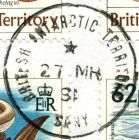
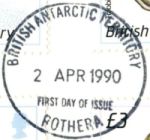
The first stamps of British Antarctic Territory were issued in 1963, a definitive set of 15 values, shows a portrait of Queen Elizabeth and various scenes of human activity in Antarctica. Since then, 10-20 stamps are issued every year in several sets, with a full definitive series every few years. [R2]
British Antarctica is unusual in that it does not design commemorative postmarks for use on its FDCs. The FDC postmarks look like the regular postmarks, but have the text “FIRST DAY OF ISSUE” underneath the date.
The Falkland Islands Philatelic Bureau acts as the sales agent for the British Antarctic Territory. All official First Day Covers are cancelled at the relevant base in the Territory, before being returned to the Philatelic Bureau at Port Stanley for distribution. The Antarctic Postman, based at Port Stanley, visits BAT bases by ship to officially release new stamps and the stamps are not otherwise available for sale until this has happened. The date of the visit is recorded and the stamps are then released at the Falkland Islands Philatelic Bureau, at Port Lockroy for tourists, and elsewhere. [R2]
Official stamps of British Antarctic Territory related to Paleontology: dinosaurs and other prehistoric animals, fossils.
| 08.03.1982 "Continental Drift" | 02.04.1990 "Marine Fossils" | 27.03.1991 "Fossils" |
 |
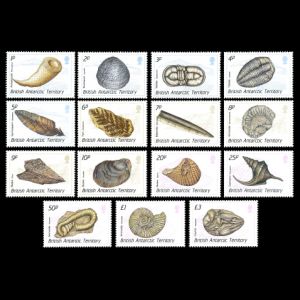
|
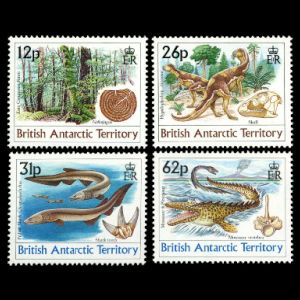 |
| 17.11.2008"Fossil Ferns" | ||
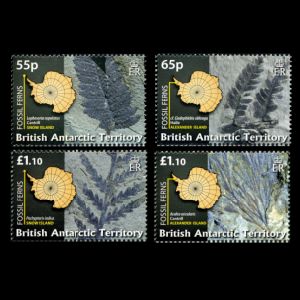 |
|
|
Other stamps of British Antarctic Territory to consider: contributors to Paleontology
| 14.02.1973 "Polar Explorers: Otto Nordenskjöld (1869-1928)" [A2] [A3] | 14.02.1973 "Polar Explorers: Carl Anton Larsen (1860-1924)" [A2] [A4] | 05.12.1980 "Polar Explorers: Carl Anton Larsen (1860-1924)" [A2] [A4] |
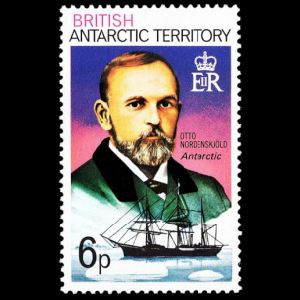 |
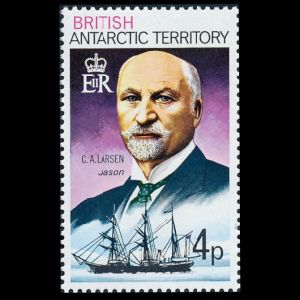 |
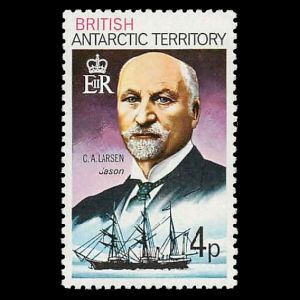 |
| 05.12.1980 "Polar Explorers: Otto Nordenskjöld (1869-1928)" [A2] [A3] | 19.03.1987 "75 years since first expedition of Robert Falcon Scott to Antarctic" [A1] | 17.11.1994 "Polar explorers and their ships" [A1] |
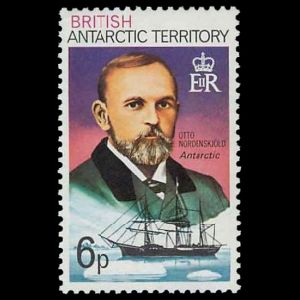 |
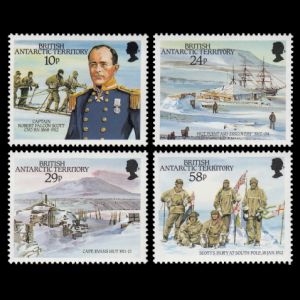 |
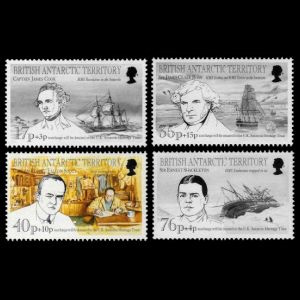 |
| 05.12.2001 "British Antarctic Expedition II" [A1] | 23.11.2008 "History of Arctic Research" [A1] | 03.12.2010 "Centenary of British Antarctic Expedition (1910-13)" [A1] |
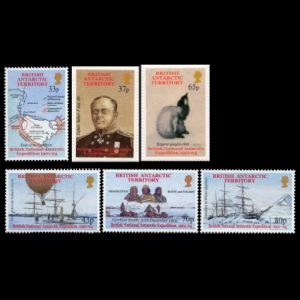 |
 |
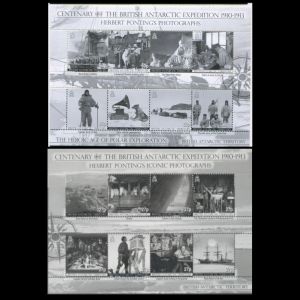 |
| 18.11.2019 "Bicentenary of Discovery of Antarctica" [A1] | 18.11.2019 "Centenary of Scott Polar Research Institute" [A1] | |
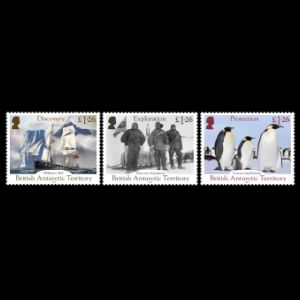 |
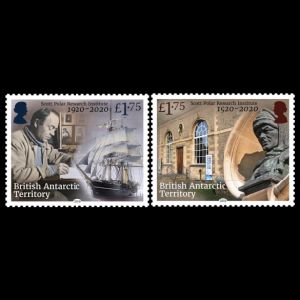 |
|
Notes:
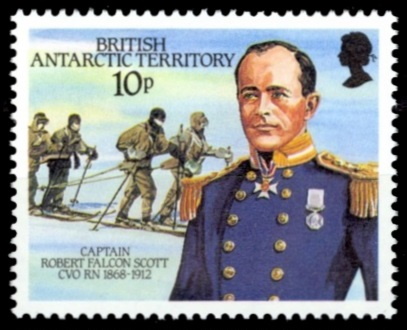
|
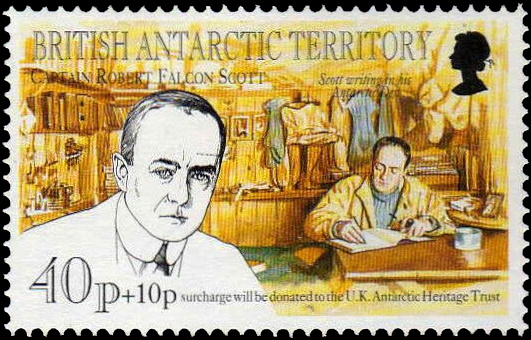
|
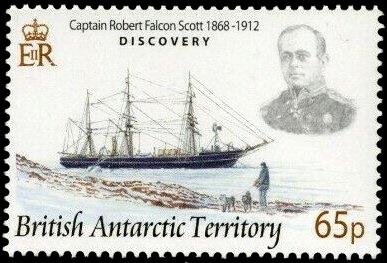
|
| Robert Falcon Scott on stamps of British Antarctic Territory: 1987 - MiNr.: 140, Scott: 137; 1994 - MiNr.: 233, Scott: B3; 2008 - MiNr.: 465, Scott: . | ||
Scott and his companions died on the second expedition. When Scott and his party's bodies were discovered, 16kg of Glossopteris (an extinct beech-like tree from 250 million years ago) fossils from the Queen Maud Mountains were found next to their bodies, which they had dragged on hand sledges.
These fossils were promised to Marie Stopes (shown on UK stamp in 2008) to provide evidence for Eduard Suess's idea that Antarctica had once been part of an ancient super-continent named Gondwanaland (now Gondwana).
More details are here.
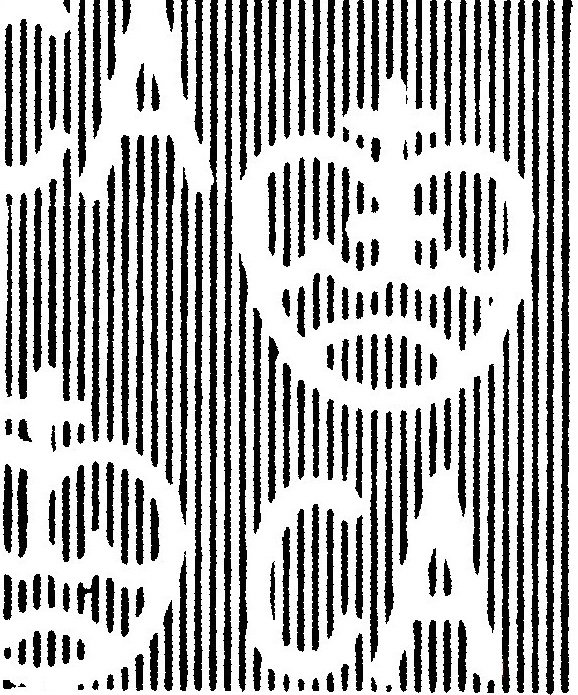 |
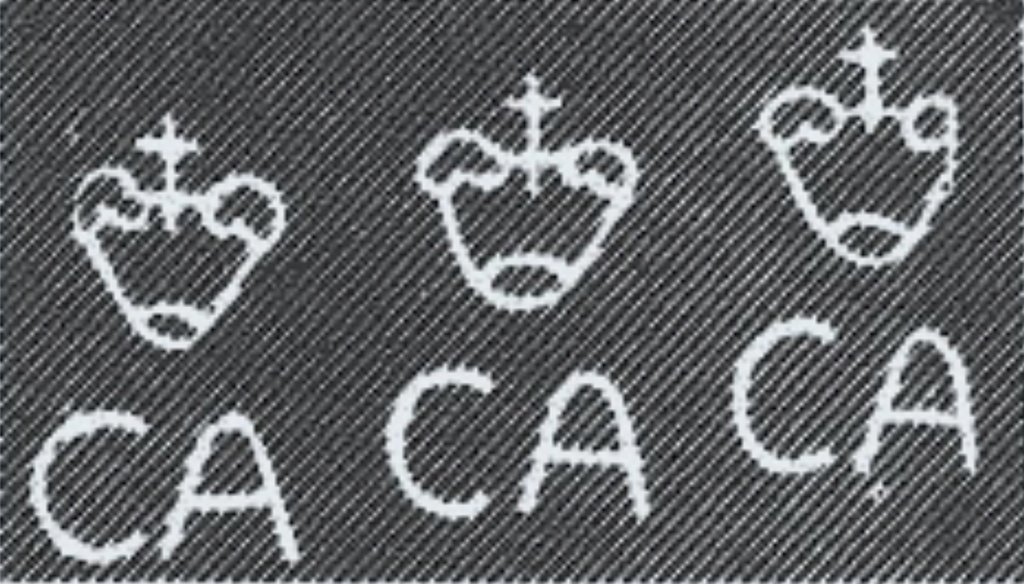 |
[A2] "Polar Explorers" stamps set is multi-year set of over 3 dozen of stamps, were issued between 1973 and 1980.
The stamps from 1973 and 1980 have the same design, but different watermarks (see on the right).
[A3] Otto Nordenskjöld (1869-1928) was a Finnish and Swedish geologist, geographer, and polar explorer.
In 1902, he discovered Jurassic plant fossils on Seymour Island in Antarctica.
Nordenskjöld became one of the first to suggest that Antarctica must have experienced a much warmer climate in the past, covered by forests of ferns and tropical plants.
For more details please click hier.
[A4] Carl Anton Larsen (1860-1924) was a Norwegian-born whaler and Antarctic explorer who made important contributions to the exploration of Antarctica, the most significant being the first discovery of fossils for which he received the Back Grant from the Royal Geographical Society.
For more details please click hier.
- [R1] British Antarctic Territory (BAT): Wikipedia, FlagCounter.
- [R2] Postal History and Philately of British Antarctic Territory (BAT):
Wikipedia,
Links to official website of the Post Authority, stamp catalog and a list of new stamps of British Antarctic Territory are here.
Acknowledgements:
- Many thanks to Dr. Peter Voice from Department of Geological and Environmental Sciences, Western Michigan University, for the draft page review and his valuable comments.
- Many thanks to Mr. Alexander Pedchenko from Russia, for his help in finding some missing philatelic stuff of the British Antarctic Territory.
| << previous country | back to index | next country >> |